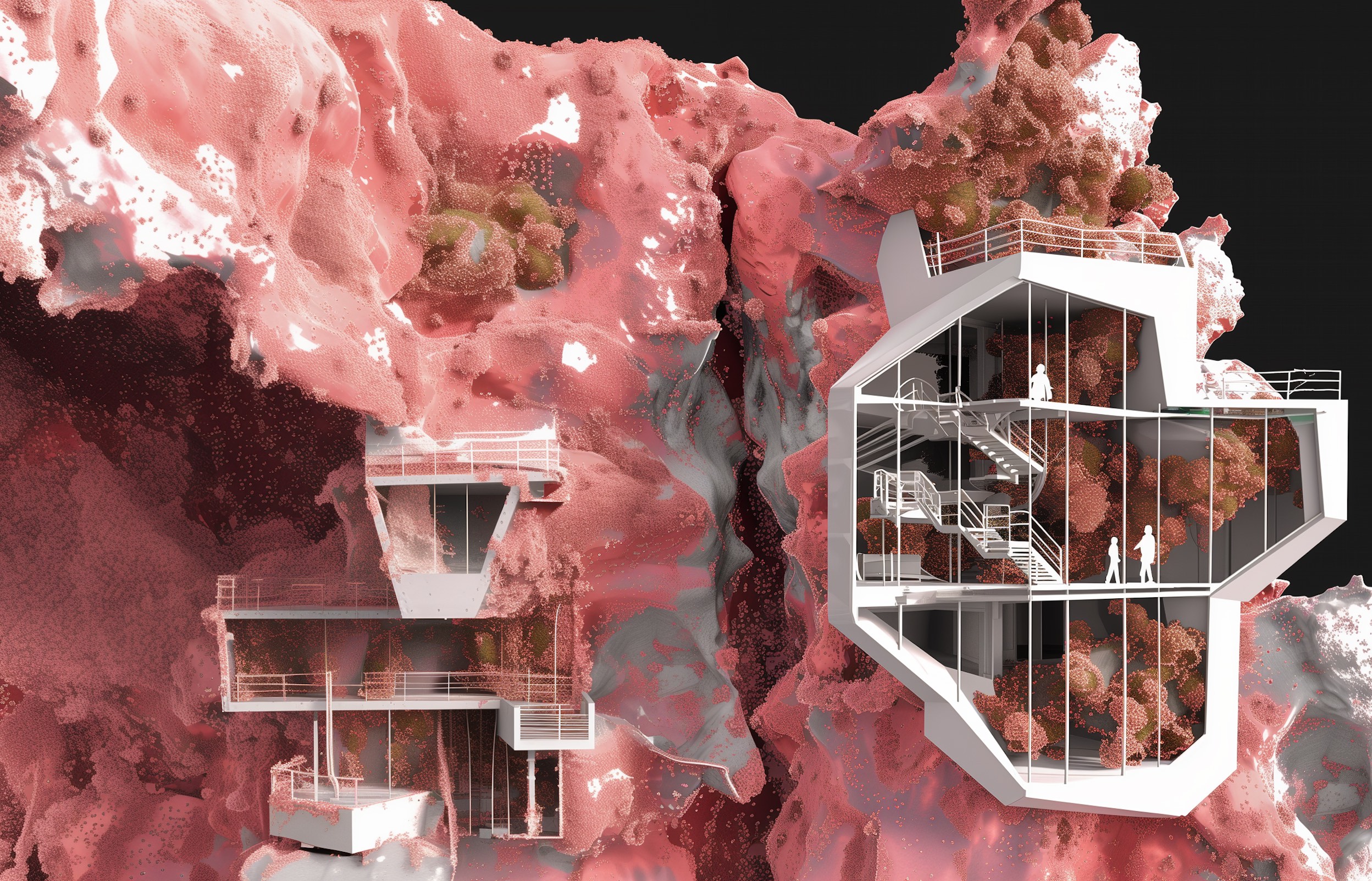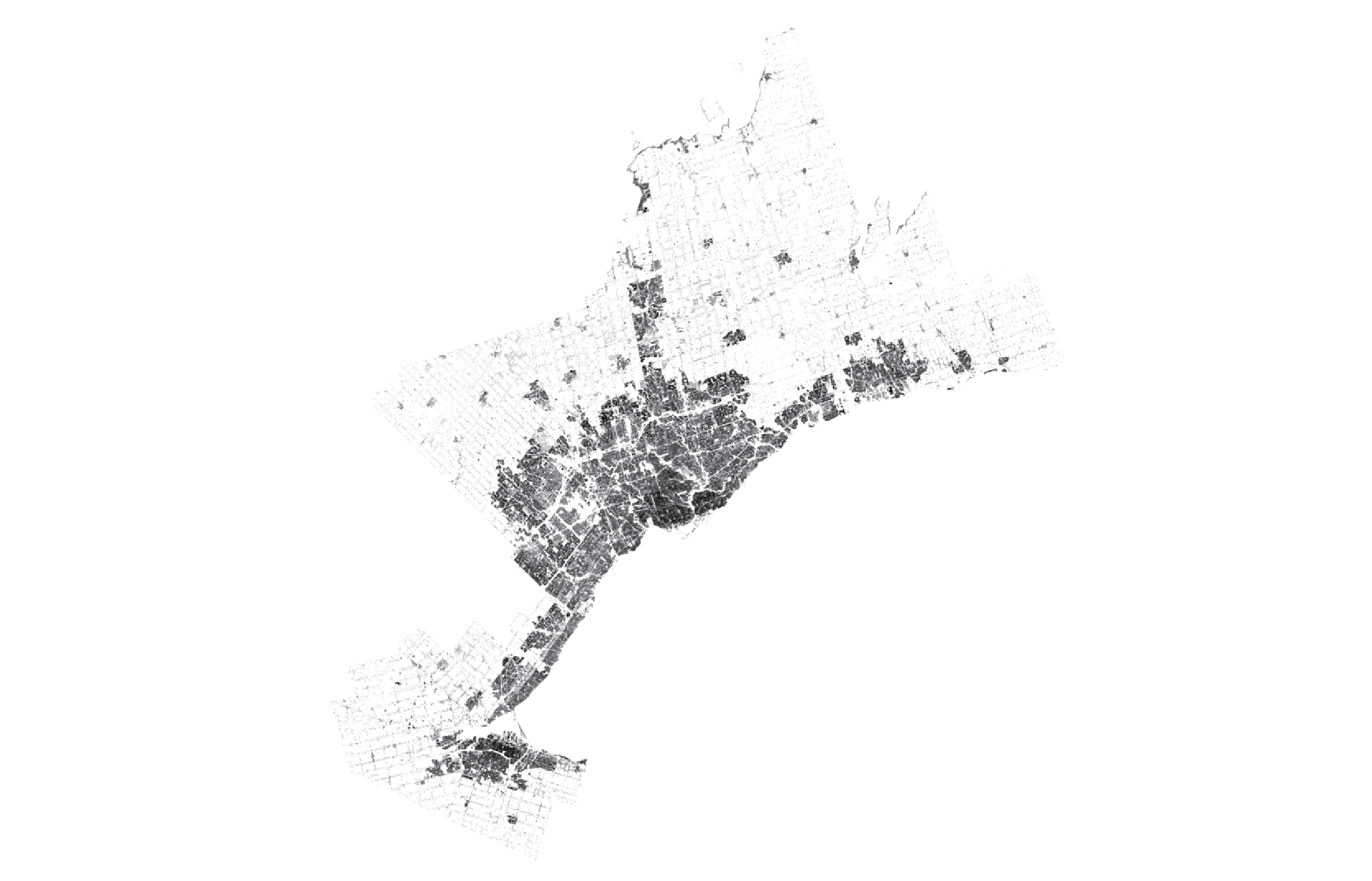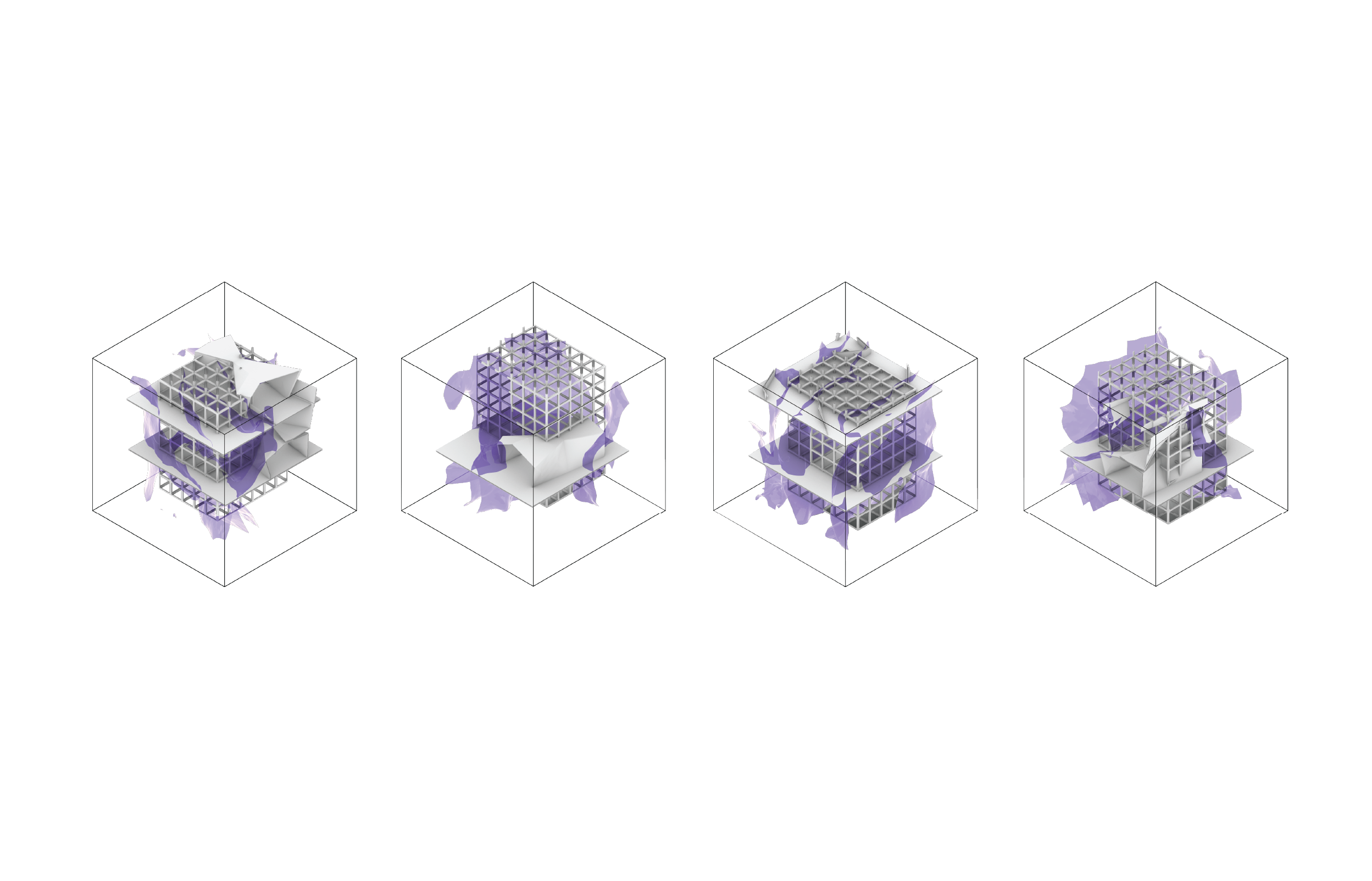







This project aims to speculatively explore the potential of growth-based architecture to reduce waste in our passive building practices by drawing inspiration from the symbiotic relationship between corals and photosynthetic algae.
As cities rapidly expand to meet growing demands, construction has become routine, often overlooking long-term consequences. Embracing growth-based architecture allows us to design autonomous buildings contributing to the environment, moving away from traditional practices and minimizing waste.
Incorporating elements like algae benefits structures and the ecosystem, mimicking natural systems, such as coral-algae relationships, to reduce construction waste and foster a sustainable urban environment.

